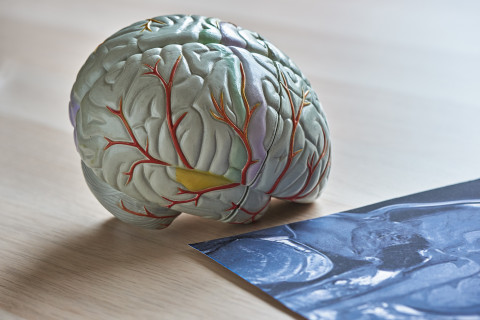The doctoral dissertation of Aaron Kortteenniemi, Bachelor of Medicine, supports the view of transcranial electrical stimulation as a safe form of treatment.
Transcranial electrical stimulation (tES) is a relatively new neuromodulation method, which has been investigated in the treatment of depression and substance dependence, among other conditions. In general, it has been regarded as safe, with very few serious adverse effects (AEs) described in the literature. Additionally, tES has been described to both alter central metabolism and affect peripheral circulating compounds.
Despite the general safety of the tES methods, various mild AEs have been described, ranging from headache to skin lesions under the stimulation electrodes. Despite being considered mild, these AEs are of practical importance, because they dictate the tolerability of stimulation and may lead to treatment cessation. The factors modifying these mild AEs have only been cursorily explored in the literature. Of particular interest is the effect of consecutive stimulations, which could result in intensified AEs. Regarding the metabolic effects, some of the changes observed in central metabolism could lead to peripheral alterations via the blood–brain barrier. Although blood sampling might offer an enticing alternative to expensive and labour-intensive magnetic resonance spectroscopy as a way to investigate tES-induced metabolic changes, the effects of tES on peripheral metabolites have not been thoroughly investigated.
To investigate these issues, the researchers obtained two samples. The first sample consisted of 82 males, split into two groups, one receiving transcranial direct current stimulation and the other sham stimulation for five consecutive days in a double-blind setting. Blood samples were obtained on days one and five and analysed with mass spectrometry to determine the metabolomic reading for a total of 102 metabolites. The second sample consisted of 60 males and females, each receiving transcranial random noise stimulation and sham stimulation in a cross-over study setting. Data on AEs, as well as data regarding lifestyle factors, were collected via questionnaires. Appropriate statistical methods were employed to analyse the data, and a computer cluster environment was used to perform power calculations.
The results showed no impact of lifestyle factors on tES AEs. Skin redness (estimated on a scale of 0–100 by visual inspection) did not intensify over five consecutive stimulation sessions, and none of the analysed lifestyle factors were statistically significant predictors for AEs. Additionally, the models investigating the effects of tDCS on peripheral metabolites did not reach statistical significance. However, extensive power calculations were performed to estimate the sample sizes necessary for metabolomic studies.
“Our findings further support the view of tES as a safe form of treatment. In addition, our findings may suggest that lifestyle factors do not modify tES AEs, although we cannot rule out the possibility of simply lacking the power to detect such effects. Our power calculations will provide a general estimation of a necessary sample size for any future researchers interested in examining the effects of tES on peripheral metabolites,” Kortteenniemi concludes.
The doctoral dissertation of Aaron Kortteenniemi, Bachelor of Medicine, entitled Safety and metabolic effects of transcranial electrical stimulation will be examined at the Faculty of Health Sciences. The Opponent in the public examination will be Professor Marcus Meinzer of the University of Greifswald, and the Custos will be Professor Soili Lehto of the University of Oslo. The public examination will be held in English online on 22 January 2021 starting at 12 noon.

